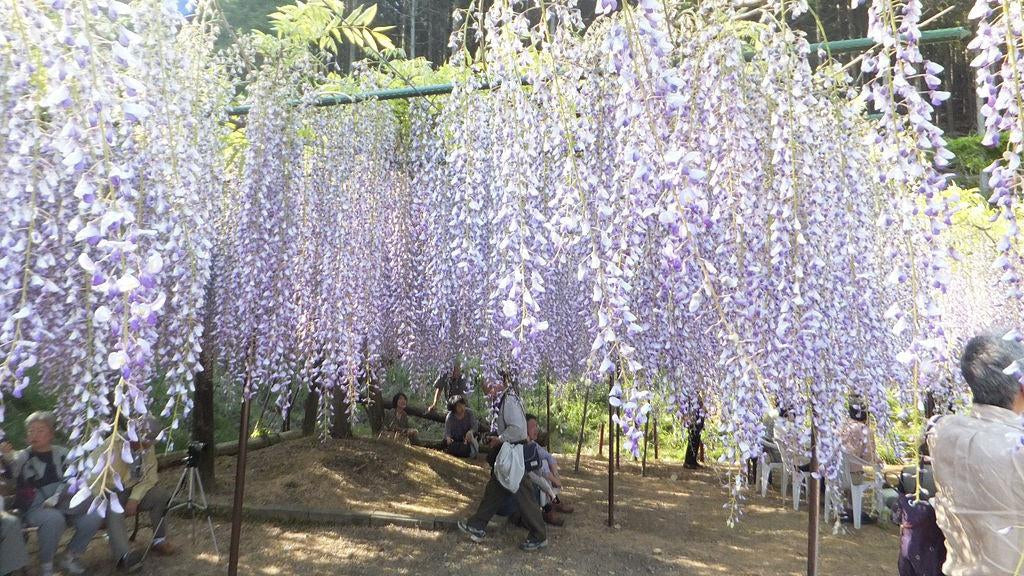
How To Care For Your Japanese Wisteria Bonsai Tree
Wisteria Floribunda Bonsai Care
About The Japanese Wisteria Bonsai Tree
The Japanese Wisteria is a beautiful climbing plant that makes an excellent bonsai tree, showcasing dramatic cascading flowers. It has a distinct shape, and it's flowers are well known in the wilds of the US and Japan.
When this wisteria becomes an adult, it will show off a lightly fragrant purple flower in the springtime.
Is a deciduous outdoor plant - only take indoors for special events.
Placement
A Japanese Wisteria makes a wonderful outdoor bonsai. It is happy with morning or afternoon sun.
In the winter, it needs to go dormant. You can do this by placing it in an unheated shed or garage, or by burying the tree in its pot (up to the trunk) in some mulch.
Watering
Your Japanese Wisteria bonsai will not survive being totally dried out. Water it regularly, before the soil appears dry, and never let it dry out completely.
Humidity
When your Japanese Wisteria bonsai tree is indoors for showing off, or in a garage for the winter, using a humidity tray is recommended.
Fertilizing
Since your Japanese Wisteria bonsai is in a small pot, and not the ground, it needs nutrients. A slow release (pellet based) fertilizer is perfect for this, and can be added sparingly every 1-2 months during the growing season.
Pruning & Trimming
Trim back the new growth to the farthest safe point that looks good to you — but never remove all of the new growth.
A regular trim will help keep your Japanese Wisteria short, while helping the trunk grow thicker.
Repotting
Repotting must be performed periodically on your bonsai, Japanese Wisteria included, when its root system has filled the pot. If you can clearly see the roots coming out of the bottom of the pot, it’s time to repot your bonsai.
Generally, this means every 2-3 years for a deciduous tree and every 4-5 years for an evergreen. Your Japanese Wisteria bonsai will fall somewhere in the 2-3 year range.
Repotting should be done in mid-summer, when the tree is at it’s least fragile state.
The Japanese Wisteria bonsai, along with all of its soil, should be removed from the pot. From there, you can trim away no more than 1/3rd of the root mass (1/4th is preferred.)
Then you can repot the tree in the same pot, or give it a newer / bigger pot to thrive in.
After repotting, your bonsai Japanese Wisteria should be thoroughly watered.
Diseases, Insects & Other Pests
Your Japanese Wisteria bonsai can be treated for pests like a normal Japanese Wisteria shrub. Just remember, your tree is miniature and will need a much smaller and more gentile dose of treatment.
Would you like to SEE these instructions as a series of videos, instead of just reading them?
If you want to demystify the art of bonsai so you can become a master of this relaxing hobby in just a few days, you need the right training. I’ve built a digital video course that mixes classroom style instructional videos with “over the shoulder” style training videos to make bonsai simple to understand, and easy to start.
In this digital video course, you'll discover:
- How to create a bonsai tree from scratch that will help you experience true inner-peace and calm.
- How to keep your tree collection alive and well so you can enjoy their benefits for a lifetime.
- How to shape your bonsai like a professional, allowing you to design it however you like.
- What bonsai tools you really need and how to use them so you’ll never buy a tool that you don’t need again.
- How to cultivate your own trees so you never have to buy another tree from a store again.
- How to use all of this to create your own bonsai collection so you enjoy this relaxing hobby for the rest of your life.


